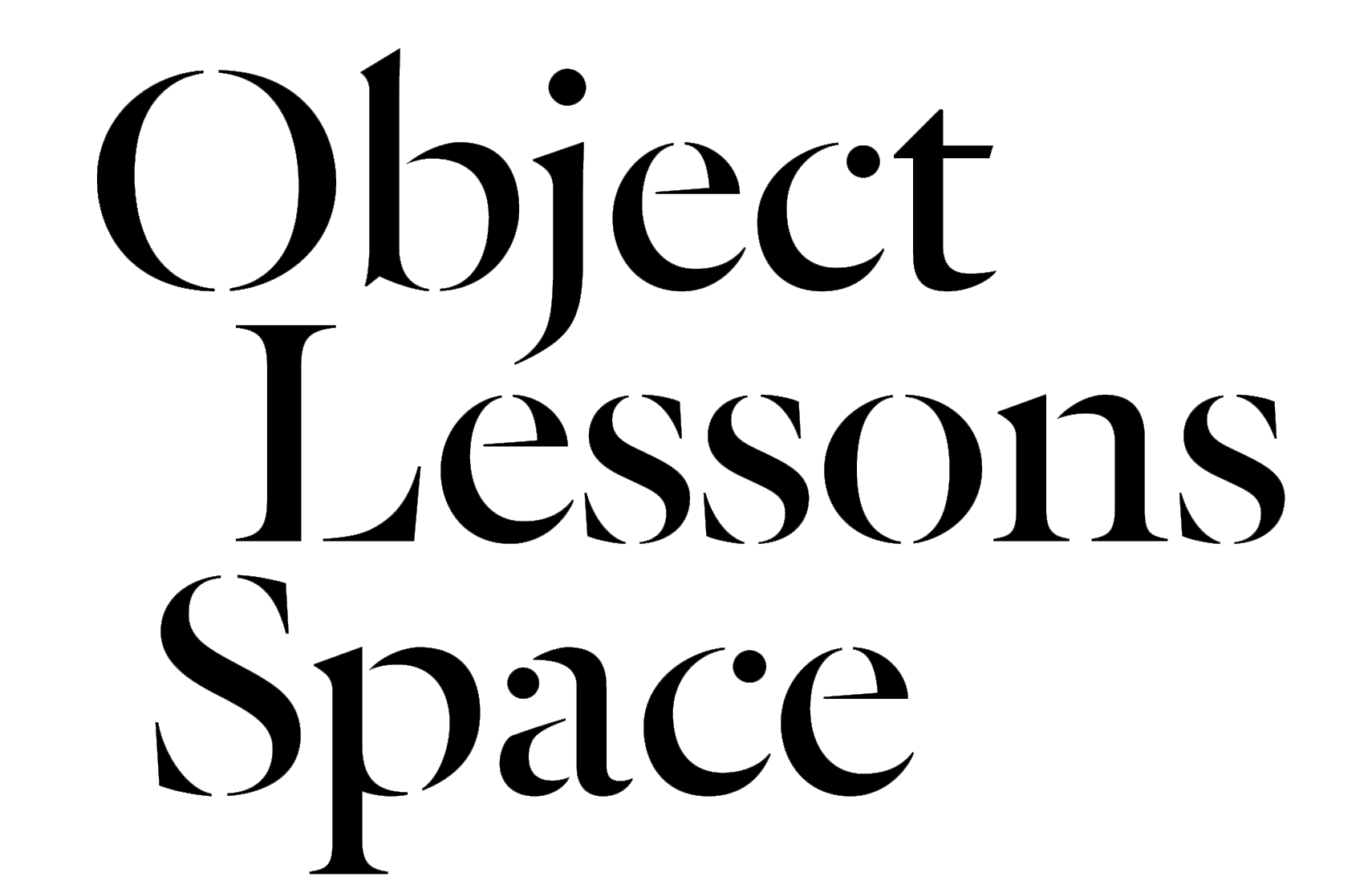Zarina Muhammad (b. 1982, Singapore) is an artist, educator and writer whose practice is deeply entwined with her decade-long multidisciplinary research on the shapeshifting forms and cultural translations pertaining to Southeast Asian ritual magic and its mythological roots. In the various incarnations of her work, she is particularly interested in the broader contexts of myth-making, gender-based archetypes, and the region’s tenuous and tentative relationship to mysticism and the immaterial against the dynamics of global modernity.
Currently showing at the Singapore Art Museum (SAM) at 8Q is the Singapore Art Museum’s President Young Talents 2018 exhibition. We managed to catch up with the artist, whose work, Pragmatic Prayers for the Kala at the Threshold, has been commissioned as part of this showcase.
Currently showing at the Singapore Art Museum (SAM) at 8Q is the Singapore Art Museum’s President Young Talents 2018 exhibition. We managed to catch up with the artist, whose work, Pragmatic Prayers for the Kala at the Threshold, has been commissioned as part of this showcase.
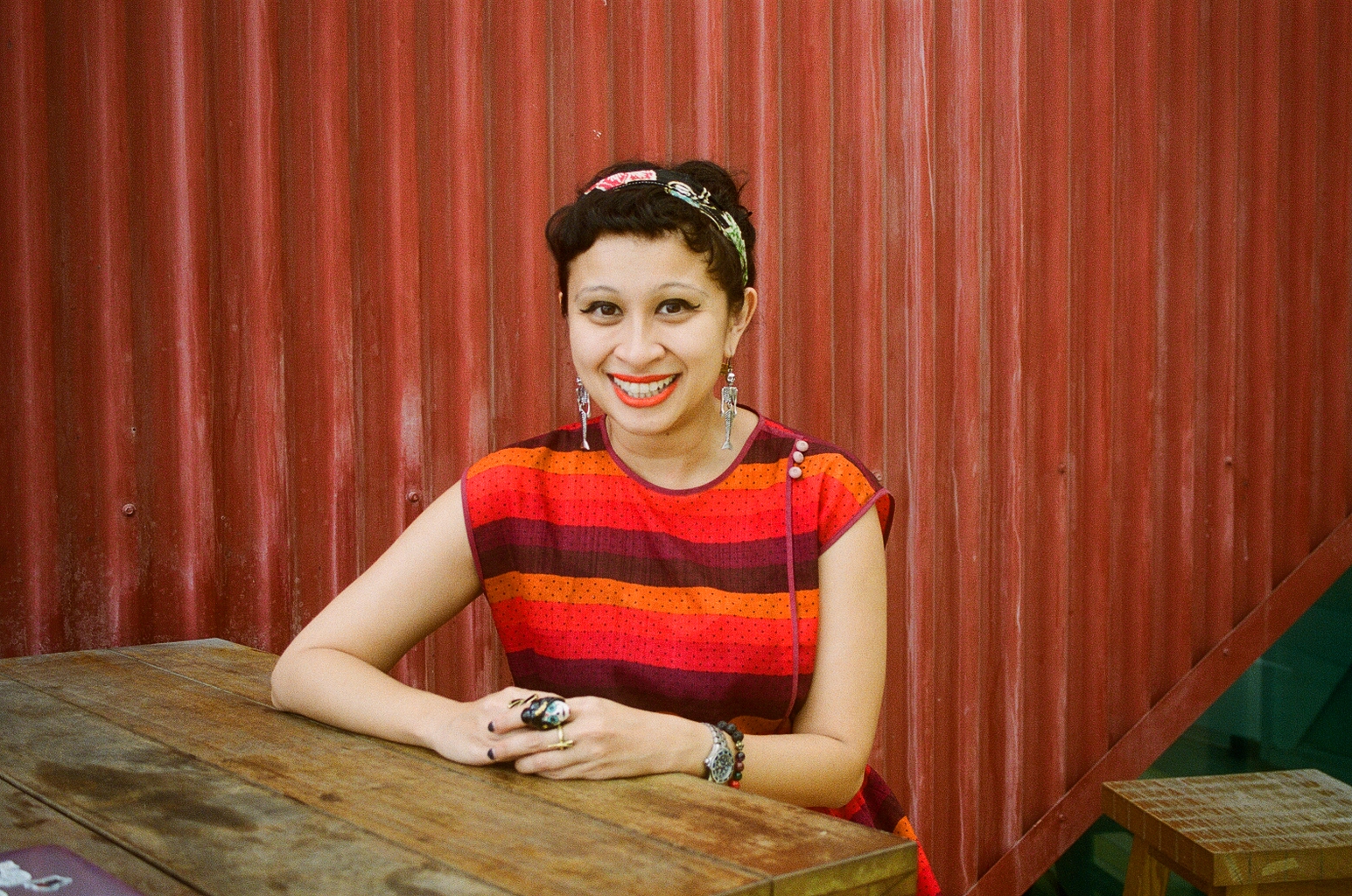
I understand that you conceptualised this work as three separate sections. What was the rationale behind having the work in segments?
The work was proposed as a three-part installation, and it’s also meant to blur the demarcations between the different worlds. I was interested in the Austronesian tripartite cosmology of the a upper world, the middle world and the lower world. There are specific spirits, deities, flora and fauna that govern or move through such spaces. I was interested in projecting these three worlds onto Bukit Larangan (Fort Canning), Bras Basah and Kallang — the shifting coastlines from the 1830s.
I wanted to think about the forgotten figures and the historical spectres that have moved through these spaces.
I was also drawn to the cultural biographies of objects, particularly ones that are materially present above the ground, and those that are perceived to be lying underneath as well.

¹ Javanese-style gold jewellery discovered at Bukit Larangan
National Museum of Singapore, c. 14th century
Let’s look at the works and objects that you chose for the interview. Some of these objects or images served as “departure points” for Pragmatic Prayers for the Kala at the Threshold. What drew you towards picking all of these reference points for the artwork?
All of the objects that I selected for this interview are directly related to this particular work.
I’ve also been doing research on this histories of magic, myths and mysticism for about ten years, so this is but one episodic visual outcome of both that body of research and the multitude of stories that I’ve accumulated. These stories have come from the different informants that I’ve met, the serendipitous chance encounters with people who’ve shared their belief systems, and even exorcism or purification ceremonies that they’ve gone through, or that I’ve been invited to attend. I’m interested in supposed or perceived binaries such as the relationship between the unseen and the seen, the living and the dead, and expanding that in relation to how this region has understood the material and the immaterial.

² Mandor
Istana Heritage Gallery, c. 1867-1869
Credit: Ministry of Communications and Information
In particular, the Mandor that you reference within this work is an interesting object. It was made by Indian convict labourers whilst building the Government House, modified by the Istana’s staff, before finally being “rediscovered”when the Istana went through extensive renovation works in the 90’s.
Something that comes up in this work quite keenly is the mutability of objects and their histories, based on whose hands these symbols end up in. In bringing these objects together, how do you understand your role as an artist, and what sort of decisions came into play when putting this work together?
A lot of my work has been focused on the risk, impossibility and clumsiness of cultural translation. For the first five years of my research, I was doing a lot of fieldwork in terms of travelling, sitting in for exorcism ceremonies and just really being open to receiving whatever came my way. After that, I had to take a break for two years. I suddenly felt the burden of my own role as a clumsy translator, and how inevitable it was that any ethnographical work could potentially be, as Michael Taussig said, “a way of telling other people’s stories badly”. I could have written an academic paper, maybe five people would read it, and just leave it as that. But I wanted to, as much as possible, do justice to these stories — even if it was an elusive or idealistic goal. That’s why it’s important to me to not use these narratives as props for art.
I’m genuinely very deeply respectful towards what has been shared with me, and sensitive towards how the context of these stories can be altered when presented within spaces such as galleries. Presenting these stories against the backdrop of art can, I think, be arguably problematic.
Coming to problematics, what were some of the concerns you had introducing the stories you’ve collected into an unfamiliar setting like the gallery?
I’ve always been interested in collapsing and dismantling the single voice of the artist or the storyteller in my practice, so I work within more collaborative contexts.
I feel that working collaboratively allows for these stories to be presented in a manner that is polyphonic, or even discordant, which I’m totally fine with because that makes tension visible.
Just a bit of background — I started presenting these materials through performative lectures, and worked with creatives such as sound artists, dancers, choreographers, film makers and spoke word poets for these performances. My brief to them was usually rather simple. I would let these creatives know that I was interested in exploring notions such as shape-shifting territories, for example, or ancestral memory and baggage; and they would respond to that brief. Because of our different lived experiences and the assumptions or blind spots we each hold, it’s always interesting to see the how story unfolds with this collective group whilst drawing upon auto-ethnographical approaches.
³ Pragmatic Prayers for the Kala at the Threshold, Zarina Muhammad
2018, Installation View at Singapore Art Museum
Photography by Singapore Art Museum
2018, Installation View at Singapore Art Museum
Photography by Singapore Art Museum
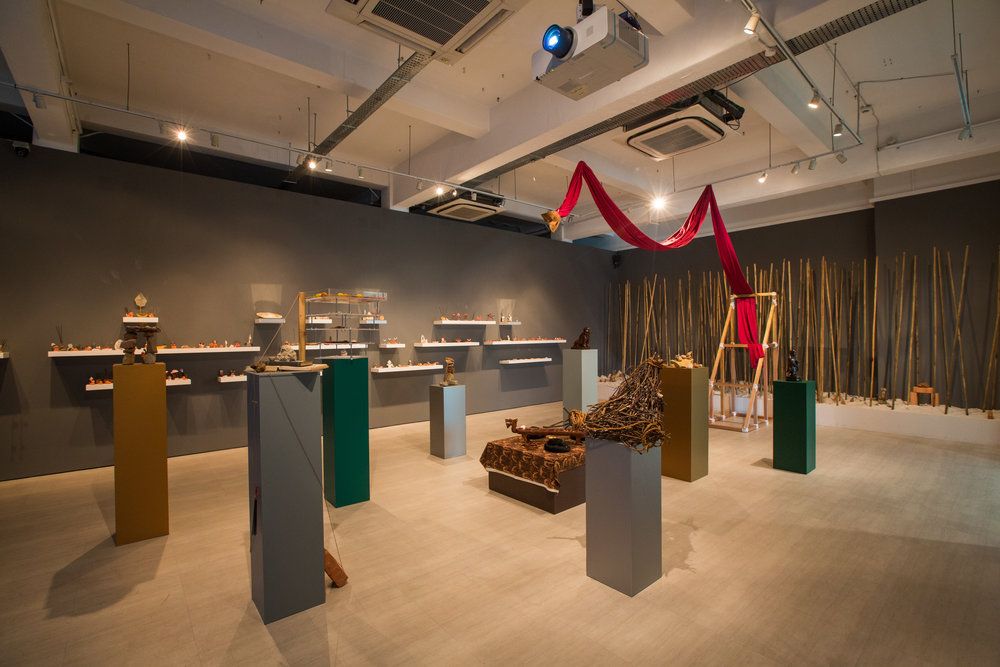
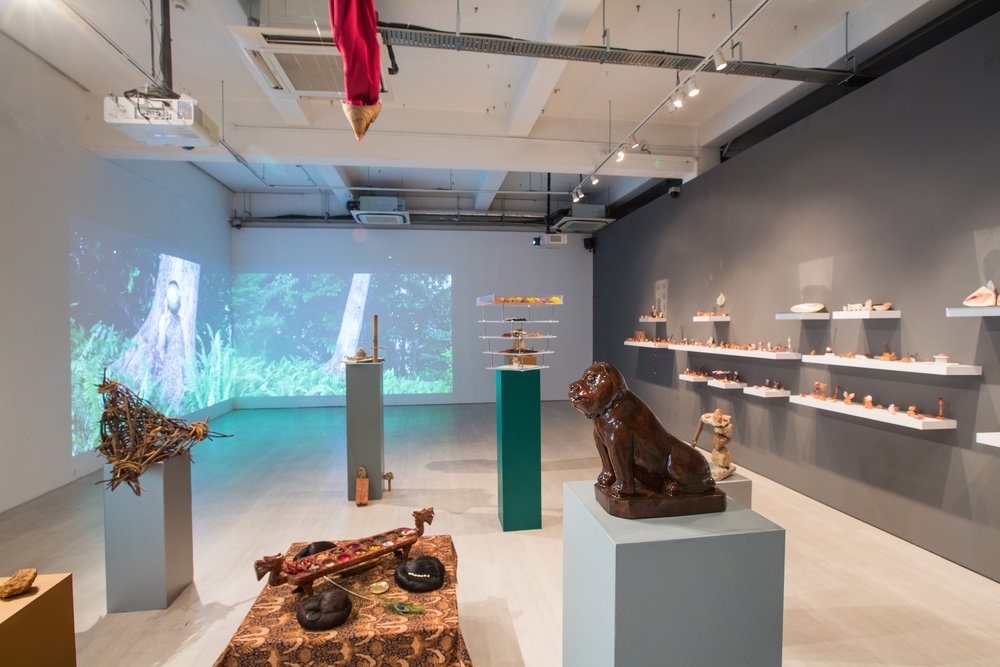
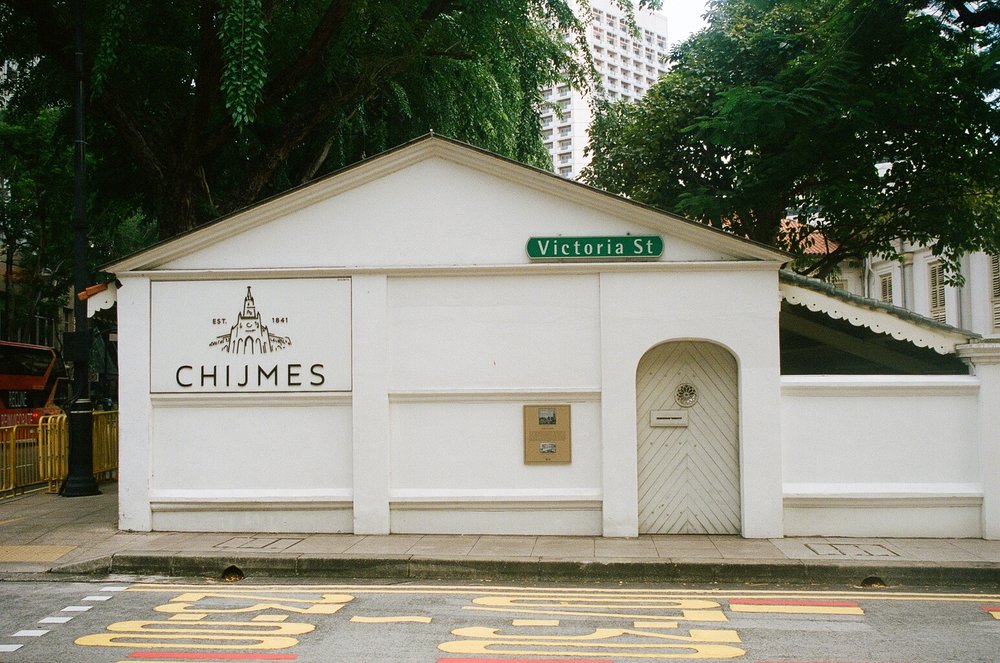
⁴ Gate of Hope
Victoria Street, Singapore
The notion of the “threshold” also plays a key role in this work, and you specifically picked out the Kāla and the Gate of Hope for our interview. Why were you drawn towards working with a transient space such as the doorway?
Talking about this is kind of like battling the multi-headed Hydra, where all five of them are trying to speak at once, so let me try to explain.
I see thresholds as spaces that hold the greatest potential for both transformation and vulnerability. I’ve always been interested in questions that surround who or what owns the land or the various sea spaces. How do these notions of power, ownership and custodianship change or shape shift over time? One of the challenges with this particular work was the fact that this had to be sustained over four months. All the other works I’ve done have either lasted for a single night, or have been exhibited only for a short period of time.
The space will be activated throughout the four months, and it was important for me that the space itself could perform. I wanted it to take on a life form of its own — to live, pulse and shape shift. This comes from my own animist belief systems and I see things as having their own life forces, so similarly, I would like for the space to have agency outside of me. As such, it was important to have the voices of people from different backgrounds, disciplines and entry points come in to comment and intervene in the work.
Generally, my work is also interested in the interregional and intergenerational hand-me-downs or fragmentations of some of these narratives. What residual legacies of survival and trauma are we left with?
What are some of the performative activations that will be happening in the space?
There are nine performances in total that will take place in the space.
The first was the opening performance, where I worked with the collaborators in the video to do a symbolic opening and blessing of the space. The idea of the construction sacrifice is quite common in this region, where a sacrifice is involved whenever a house or a bridge is built. In some cultures human or animal sacrifices are involved, but there are also instances of vegetarian or plant-based sacrifices and offerings being used as well. We wanted to do something like that so as to open up the space, set that intent for the room itself, and to give thanks for all the stories that are lending their voice to this work. I’m always interested in the potential of an artist or a storyteller to be a medium, or a cultural ventriloquist of sorts.
I’ve invited Singa Nglara Gamelan Ensemble to perform for the second activation. There will be sixteen musicians who will be playing music that responds to the work and its themes.
The third activation will be a multi-site tour in collaboration with the curator for Magic and Menace at the National Museum of Singapore. The exhibition features items from the old Raffles Museum and William Farquhar’s collection, so you can imagine that they’re quite ethnographic objects that were looted. We want both exhibitions to speak to each other, so we’ll start from 8Q before moving towards the Singapore Management University (SMU), where the Bras Basah convict prison used to be. We’ll also pass by the bodhi tree, which was believed to have been planted by the convicts as a symbol of hope, before arriving at the National Museum of Singapore.
During Singapore Art Week, I’m hosting an effigy making session. I often host effigy making sessions in my studio as well, and some of them are featured in this particular work.
There will also be a talk by Dr Imran bin Tajudeen, the architectural historian; Alfian Sa’at and Faris Joraimi are also coming in to talk about magic. Alfian will also be writing and performing what he calls modern mantras. The final activation will be a performance by the theatre-maker, Irfan Kasban.

When you envision these performative activations, do you see the human presence in mediating that experience as important or integral?
Yes and no, because I think that there are certain potentials and limitations to the human presence. It can definitely lend a particular energy to the space. With this work, I had to think about how the space itself could speak without me.
When people come into the space, one of the things that they say is that the space is filled with small things and strange smells.
Yet with aspects, such as the video, where they might not exactly understand what they are seeing, people are still able to connect with the work because of the inclusion of elements such as the water. For me, it’s okay that each person comes in and engages with the work as far as they are willing to. The viewer will get to know the work as far as she or he would like to take it — that’s always my take and experience with looking at works by other artists as well. It’s easy to read the works on the surface, and easy to say things such as, “why are there so many Indonesian references in a work that’s about Singapore?”
Do these objects speak for themselves? How can we think beyond the points of forgetting between the pre-colonial and the post-colonial? We’re actually a lot more connected than we think.
Someone also asked me about the significance of the number 9 in this work. It’s Navaratri now, the nine-day festival to the Hindu goddess Durga; and the Nine Emperor Gods Festival has just started as well. Nine is also the number for the Sri Yantra, a cosmic symbol with nine interlocking triangles. There are also the Wali Sanga, the nine saints who brought Islam to Java; the Nine Muses; nine is also the number of completion — so a viewer’s individual reference point or cultural context will inform how they read this work, and that’s completely fine by me. I’m not here to be didactic and prescriptive by saying that there’s only one meaning in this work of art.
You seem to have spoken to quite a few viewers about their responses to your work. After speaking to you about the work, do their perspectives towards what they’ve seen change?
I hope so! Viewers might feel very overwhelmed after our conversation because I speak too quickly, and it can sound like I’m rapping all the time when actually, I’m just over-caffeinated and trying to get all the information across. With tours, I’ve always had to pull back and think about what are the key points I want to convey. There are just so many interesting stories, so how do I rein in my own inner Hydra?
Whilst we were setting up, what I really enjoyed was having the staff here at 8Q and the people who look after the building move through the exhibition. We’d just have conversations about the effigies, and they would always have their own take on it, which was nice.
Tell me more about the effigies.
The effigies make up the more participatory aspect of the work. I invited small groups of six to eight people to come by my studio and make these effigies. I asked them to make effigies of what they thought their personal guardians or the guardians of their land looked like. If these guardians could be made visible, what would he, she or they look like? They could be anything — human or anthropomorphic. I had people from different generations, backgrounds, professions and age groups come in. These sessions would last for two hours, but sometimes people ended up staying for six. Everyone would just be making these effigies and engaging in great conversation.
Initially, I wanted these effigies to be made of rosewater, turmeric powder, and sandalwood powder. These materials are traditionally linked to the making of effigies for festivities in places such as Bali or South Asia. But of course, those materials don’t last. I thought the concept of it was great, because some of the effigies would then disintegrate over time. However there was the issue of mould, so I ended up mixing these materials with clay. I experimented with a couple of recipes where I mixed these materials with flour, for example, but mould would develop on these effigies in the most spectacular way. It was beautiful to me, but they weren’t suitable for the museum setting.
I hosted about six or seven effigy making sessions, and for me, this was another way of destabilising the single voice. I had also just undergone a major surgery in June, so getting people to participate in making these effigies was pragmatic as well. Three weeks after the surgery, I had already started working on this piece. When people came to visit me, they would often make and create with me in order to motivate and encourage me. It ended up being such a wonderful experience, and I thought it would be a nice way to get different people involved.
Whilst walking around the space yesterday with the curator, Andrea Fam, I told her that she could point to any effigy in the work and I’d be able to tell her exactly who made that sculpture. I could tell her everything — the name, and the profile of the person who made it. Those sessions were incredibly intimate, with people sharing their own stories of what the experience meant to them.
⁵ Pragmatic Prayers for the Kala at the Threshold, Zarina Muhammad
2018, Installation View at Singapore Art Museum
Photography by Singapore Art Museum
2018, Installation View at Singapore Art Museum
Photography by Singapore Art Museum
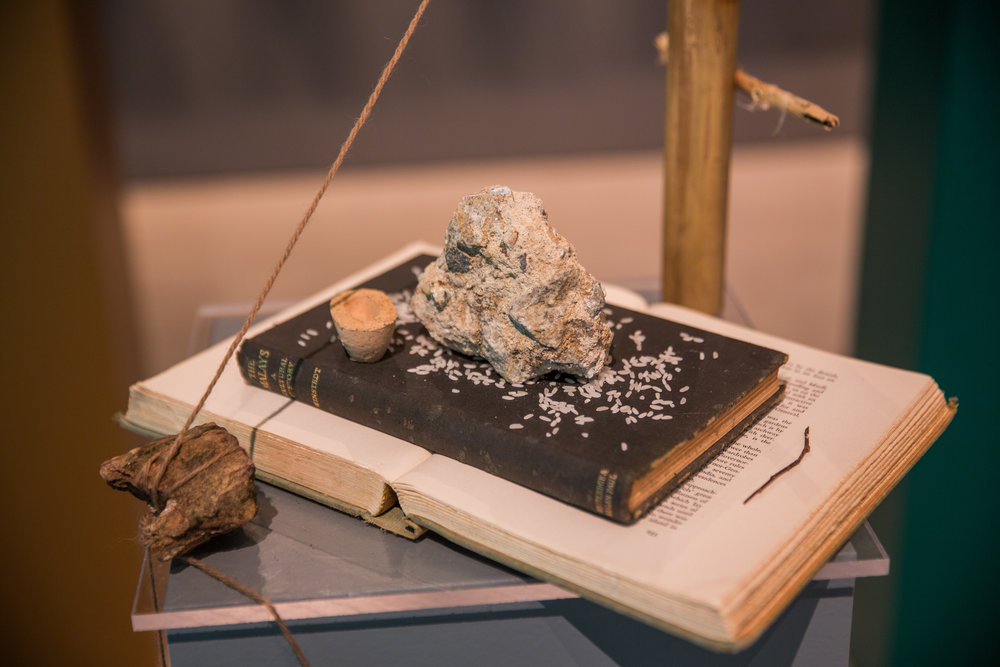

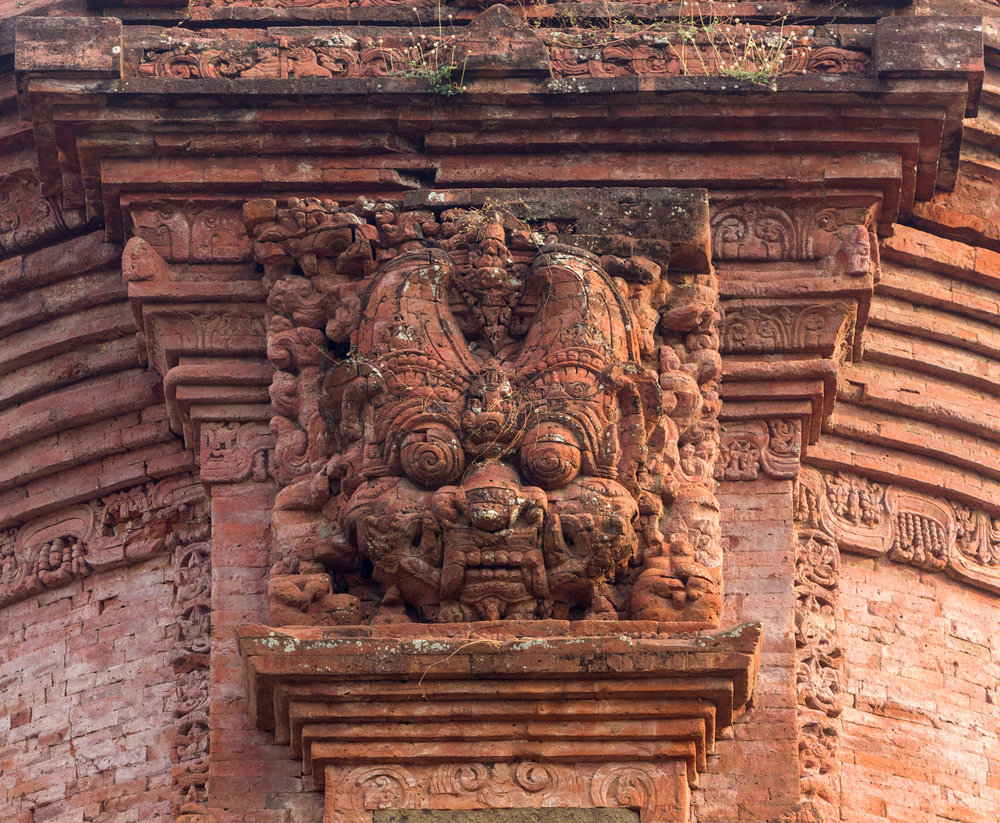
⁶ Kala Head
Candi Jabung, East Java
On top of these effigies, you’ve also incorporated a variety of things into the work to create a strong overarching narrative. How were these objects selected?
As much as I wanted to expand on the idea of Austronesia itself, its material cultures and ancestral art, I also wanted to map it onto three specific locations in Singapore in order to anchor it to a specific narrative.
I was already interested in the history of Bukit Larangan, and the figures who had moved through that hill over the past seven hundred years. It was seen as such an important landmark for those who came to rule, and the image of the Kala was found on a piece of jewelry excavated in 1926. It was believed to have belonged to the 14th century rulers of the island, and this piece of jewelry can be seen today at the National Museum of Singapore. Kala is the Sanskrit word for time, but also destruction and death. I’ve explored this travelling of stories from South Asia to East Asia to Southeast Asia before in my previous works, and Kala is a really good example of this. He’s understood as being the son of Shiva and a demi-god. In Java, Batara Guru is the equivalent of Shiva, and the same sort of creation myth is shared. Batara Kala had to be reined in by the rest of the gods, who told him not to be such a man-eating ogre. To cut the long story short, he then became the guardian of the doorway. You can still see material evidence of this with the entrances of the Kraton in Yogyakarta, in Borobudur, and Hindu temples. In Java, there’s also this purification or exorcism ceremony called Murwa Kala. It’s done for children who are ill, or people with bad luck. Fifteen years ago, an anthropologist located ten or fifteen examples of this in Java. I read that, and kept that in mind whilst I was in Yogyakarta recently as well.
The shape-shifting quality of definitions are important to my work, so when I first started, one of my early reference points with this work were materials written by British colonial officers and scholars. Those are often very problematic, but I used them as a tentative source. I didn’t want to negate them, despite them being problematic, but to see how, in spite of them, I could extend the conversation beyond their words. In this work, I’ve included a memorial or graveyard to two particular texts on Malaya from that period of time as well.
When talking with my students about the Bras Basah convict prison in particular, they didn’t know that there was once a prison there. Many of them didn’t know what stood on that land prior to the Singapore Management University (SMU). With that, just thinking about, for example, the figure of the Mandor, becomes incredibly intriguing. He was created in 1876, supposedly by the convicts as their spiritual benefactor and protector. I love the idea that underneath all of these colonial buildings, effigies have been buried to protect the building and the builders. That was their own intervention and claim to the land, to say that they were once here. Including the Mandor was a way for me to say, “You have been witnessed. We see you. We remember you”. I worked closely with Say Tian Hng, the oldest effigy maker in Singapore, to create this figure, which is made of sandalwood. It was an interesting experience because the effigy maker didn’t speak much English. We relied a lot on drawings to communicate. It made me think about the ways in which we describe, animate, and bring a form to something. I like that there were conversations going back and forth between us.
Within the space, I’ve included markers of hills, land and the sea. The plinths are meant to function as coordinates on a map. One of the things I’ve proposed with this exhibition is that the space itself should shape shift over time. There’ll be objects coming in and out, so it won’t be a static space throughout the four months.
With the video, I was interested in our relationship to the sea. It’s sometimes so easy for people to forget that we’re an island because we don’t see the sea.
I was thinking about how we, in maritime Southeast Asia, have a forgotten relationship with the sea, which has given and continues to give us so much. When I met with fishermen from Batam or Bintan, they told me so many stories about fishing magic, or the offerings they place into the sea. I think the thing about this kind of work is that sometimes it takes people awhile to come out of the spiritual closet. With the nine collaborators for the video, I gave them very simple questions, such as: “Think about your relationship to the sea” or “Think about water both as a conduit for healing, and as having the potential to drown you”. They wrote responses to those questions, and they ranged from personal letters to philosophical musings. I also asked them to bring along a personal talisman, something that they see as a symbol of protection or power. The music that accompanies the video comes from a Malaysian folktale, which tells of how a mermaid falls in love with a fisherman. In the story, the fisherman’s friends convince him to return to the land; and at the same time, an elder mermaid sets everyone straight. The morale of the story was that those who belong to the land should return to the land, and those who belong to the sea should return to the sea. Again, there’s this narrative that probes into notions of belonging and identity.

⁷ Map of the Town and Environs of Singapore, G.D. Coleman
National Archives of Singapore, 1839
You also mentioned being intrigued by a map, especially one drawn up by G.D. Coleman in 1839. That was really interesting for me, because maps are often associated with a very colonial impulse to know and chart a land in a manner that sat at odds with what the people of the land were used to at that point in time. Do you see your work as being an alternative map of sorts?
Yes. The 1839 map by Coleman was one of the earlier maps made of Singapore, and it already shows the grid system with which the British saw and divided Singapore. In particular, it reflected certain divisions of labour, class, ethnicities and communities. The Sultan’s Palace was shifted, and the locals were moved out of the city centre. In their place, these colonial architectural forms were then built, and I’m interested in how we then come to navigate and understand these spaces. The British also cut up the river, which isn’t a sea, but is also a body of water. There’s a belief that the portal to the underworld is where two bodies of water meet, so these colonial intrusions and territorial markers really shifted the ways in which borders are mapped.
For me, this work is really about the phantom pasts and the spirit histories. We’re now moving towards the bicentennial, but I’m interested in how we can not just think about the last two hundred years, but the last seven or eight hundred years. Someone asked me recently if I was trying to forward a particular religious agenda with this work. No I’m not, and I prefer to use the word belief system. There are multiple belief systems, and it’s not about creating a hierarchy. It’s just about acknowledging the various ancestral lineages we have with this land. When we think about how religions such as Islam and Buddhism took root here, we can see that it happened in a manner that was both culturally nuanced and specific as well.
Given the work’s interest in the spiritual and the cosmological, it’s interesting that you’ve filled the gallery space up with physical objects. Why use something so tangible to underscore something that’s intangible?
I forgot to mention that for the last activation, I will be inviting all my collaborators back into the space. We will be taking all the effigies and destroying them, either burning, smashing or dissolving them in the courtyard outside. With effigies, they’re often returned to the land or the sea after they’ve been made. It’s also a way to reflect on the piece of music used in the video, and it’s also a ritual performance in Trengganu, performed to bless the land and the community. It’s also a way to close the space, and to give thanks.
Apart from creating an alternative map, my mentor, Jason Wee, has described this work as one that creates shelters for all of these stories.
I do this for all my performances. There’s always this act of asking for permission because I draw from all these historical figures, narratives and stories for my work. I have my own personal ceremonies before and after.
Pragmatic Prayers for the Kala at the Threshold is part of the
President’s Young Talent 2018 Showcase at the Singapore Art Museum.
The showcase will run until 27 January 2019.
For more information, visit the Singapore Art Museum’s website.
President’s Young Talent 2018 Showcase at the Singapore Art Museum.
The showcase will run until 27 January 2019.
For more information, visit the Singapore Art Museum’s website.
